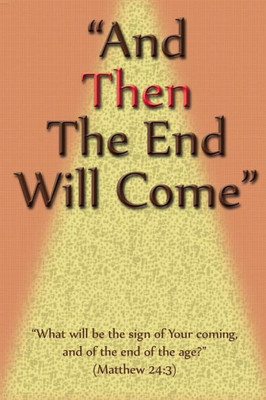Many overlook the gap of time which the Early Church experienced of nearly sixty years between the Olivet Discourse and John's vision on Patmos; their eschatology could not even possibly include Revelation. Strictly speaking, the very first generation was all but gone and the publication of Revelation actually came when the Church was firmly in the grip of its third generation of believers.No mainstream author or scholar, even those belonging to competing eschatologies, disputes that the earliest Christians all expected Christ to return in their lifetime, and within that same group is usually found a common acceptance of the later date when John published Christ's vision in comparison with the rest of the New Testament canon. But it then follows that this means the Early Church's expectations for the Second Coming were first and foremost shaped by their understanding of the Olivet Discourse, the New Testament writings providing a commentary on it, and the Old Testament, and would have no parallel knowledge of how such things might be compared and contrasted to Revelation, a body of Scripture which was not revealed in the course of most of their lifetimes.The question of what the Early Church believed concerning the eschaton is answered in that it was completely founded upon the Olivet Discourse. Since all but one Apostle died with no knowledge of Revelation, their writings obviously expound and explain the Olivet Discourse, not Revelation. This clarified for them the meaning of the Old Testament prior, and was what the New Testament writers were referring to which came immediately after. That their teachings would later fit Revelation is a testament to its divine authorship. Furthermore, we need to consider seriously that when Revelation was initially distributed to the Church at large, its authenticity and authority would have therefore been tested against the Olivet Discourse (and the rest of Scripture, of course) and not the other way around. If those Christians could have created their own PowerPoint charts and websites depicting a consolidated End Times scenario to express their eschatology, the starting point would have been the Olivet Discourse. Only in this context would Revelation be first and foremost understood and even "integrated" with what they knew from that teaching, not the other way around as is presently so often the chosen approach regardless of the eschatology proffered. If it did not perfectly conform with Christ's initial teachings, it would have never been accepted as a member of canon.During the past 30 or so years in particular, a growing number of scholars, teachers and pundits have put for the notion that the Olivet Discourse does not apply to the Church, but is intended exclusively for Israel in the wake of the Church's promised removal. This work addresses the fact that for the first 60 or so years of the Church's history, the only teaching the Apostles and Early Church possessed regarding Christ's Return was the Olivet Discourse, and when Revelation finally came available, recognized it as an authentic member of the canon of Scripture only because it conformed to their understanding of the Olivet Discourse.We need to engage in an exercise, as much as possible, to first study the Olivet Discourse without any reference to Revelation, and then take that structure and overlay it on that very last Christ-given work. Just as nothing in the twenty-six books prior to Revelation revise in even the smallest detail what was presented in the thirty-nine books of the Old Testament, neither did Revelation replace even the smallest point of the eschatological landscape for anything which preceded it. As it turns out, both are essential to properly understand the other as long as the sequence of their publication is consciously retained and not reversed to suit us.This title is available both in print and as a Kindle eBook.
- | Author: D. E. Isom
- | Publisher: CreateSpace Independent Publishing Platform
- | Publication Date: Aug 19, 2017
- | Number of Pages: 380 pages
- | Language: English
- | Binding: Paperback
- | ISBN-10: 1974510697
- | ISBN-13: 9781974510696







